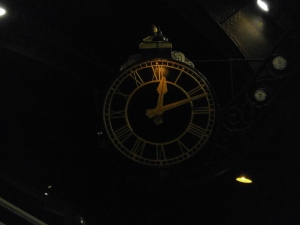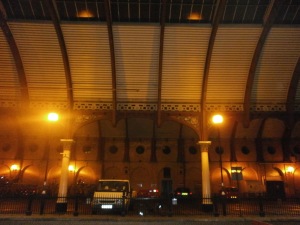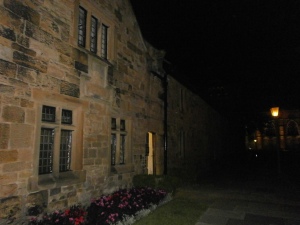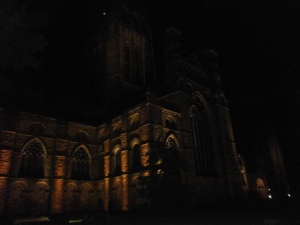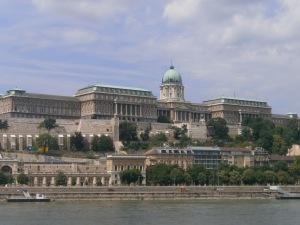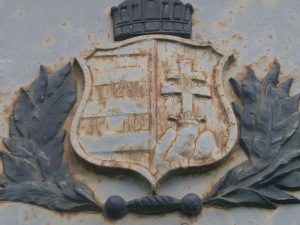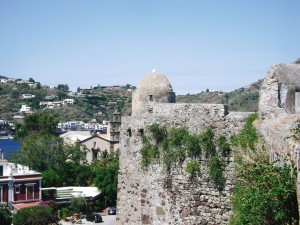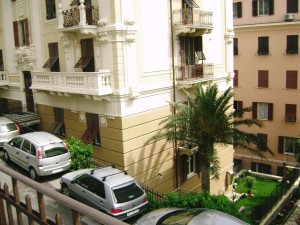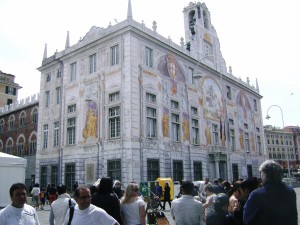
Budapest shoes….
Strolling the Pest side of the Danube on a beautiful summers’ day last week, I saw what looked like a huge collection of randomly discarded shoes. Male and female. All sizes. All ages. Cast in iron, and facing out over in the direction of hilly, patrician Buda across the river, they constitute one of the most simple, eloquent and moving memorials that I have ever seen in my life.
Some background to this is clearly necessary;
In March, 1944, Hungary, at that time an ally of Nazi Germany, began making secret overtures to Stalin’s Russia in a vain attempt to sue for peace. The Third Reich was obviously going to lose the war and Hungary’s ruler, Admiral Miklos Horthy, was anxious to jump ship before the advancing Red Army poured into Hungary. By that same March of 1944, that was looking more or less inevitable.
Unfortunately for Horthy, Hitler got wind of what he was planning in time to react rapidly.
German troops poured into the country, ostensibly to ‘protect’ their jittery ally from the Red menace. Horthy was allowed to remain as ‘ruler’ but with one proviso that had never applied previously.
The mass deportation of Hungarian Jews to concentration camps would finally begin. And en masse.
At that time, a million Hungarian Jews lived in relative safety under Horthy. He had refused to embrace the more insane and rabid aspects of Nazi ideology, But now, with his own life on the line, the morally bankrupt Admiral caved in to Hitler’s demands.
For the doomed, deranged Fuhrer, Budapest was to become an obsession every bit as massive and unhealthy as Stalingrad. The continued existence of the Jews of Budapest was something not to be countenanced. Despite the fact that Germany was reeling on all fronts, Hitler went to extraordinary lengths in his attempt to eradicate them.
First came the awful, precise and unfeeling Adolf Eichmann. Thanks to his maniac zeal and sense of organisation, crammed, fearful train loads soon began rolling out of Budapest, ultimately bound for the killing fields of Auschwitz. Eichmann found more than willing helpers in the members of the Arrow Cross, the Hungarian version of the Nazi Party.
This ghastly ritual of death rolled on for months on end, even as the Red Army loomed in the foothills of the Carpathians. As they got nearer, Eichmann redoubled his efforts with obvious, sadistic relish. And then, something completely unexpected happened.
Horthy developed a backbone, and halted the deportations.
The Regent of Hungary was no fool. He had been made painfully aware by Allied pronouncements that he would he held responsible for events that transpired on Hungarian soil. Torn between the threat of a hangman’s noose around his neck and Hitler’s baleful breath down the back of it, Horthy buckled. The death trains came to a screeching, abrupt halt.
Of course, that was not the end of the story….
The Allied landings in Normandy, plus the launch of the massive Russian offensive- Operation Bagration- in June of 1944 fully occupied the Fuhrer’s attention during that fateful summer. They also made the end of the Third Reich more or less inevitable. But come September, Hitler’s obsession with the Jews of Budapest erupted one more time.
That, and another attempt by Horthy to sue for peace, brought out the true gangster in Adolf Hitler. In a brilliant, daring plan, Horthy’s playboy son was kidnapped by German commandos, rolled up in a carpet, and delivered to the Nazis. Here, he was to be a ‘guest’ of the Third Reich.
Naturally, his continued safety came with certain conditions. Chief among which was that Horthy would resign, and turn over power to Ferenc Szalasi, the self styled Hungarian ‘Fuhrer’ of the brutal Nazi wannabes, the Arrow Cross. Predictably, Horthy folded, and went into voluntary exile.
The death trains soon returned. With them came Adolf Eichmann, working to his own timetable of doom and destruction. But things by now were deteriorating, and rapidly.
The horrid Szalasi was now Fuhrer of less than a full country. Russian troops had already overrun a third of Hungary by October, and were looming towards Budapest itself in overwhelming strength. They were already across the Danube, and threatening to surround the city.
A series of desperate German counter attacks threw the Russians back again and again. Some of the biggest and bloodiest tank battles of the war- far bigger than anything seen on the western front- were fought out across the plains of Debrecen, even as Eichmann and Szalasi kept the death trains and their terrified human cargo running at full throttle. But, in the end, the overwhelming Russian strength was bound to prevail, and it did.
On Christmas Eve 1944, Budapest was surrounded by the Red Army. Inside were 70,000 desperate German and Hungarian troops. Predictably, Hitler ordered them to fight to the last man.
They did just that. Among them were two SS cavalry divisions, whose men knew that they could expect little or no mercy from the Russians. With nothing to lose, they resolved to go down fighting.
The battle that developed was fully as bloody and monumental as Stalingrad three years earlier, although the final outcome was never in doubt. As the Red Army blasted its way through the heart of the city, more than eighty per cent of the buildings in it were either damaged or, more often, completely destroyed. Budapest was a charnel house on an epic scale.
But for the surviving rump of the Budapest Jews, the imminent arrival of the Red Army was no passport to salvation. Although the death trains had long since stopped, the members of the Arrow Cross took up the cudgel instead.
As the Budapest pocket contracted and one relief attempt after the other ran out of steam, the Arrow Cross formed a series of roaming death squads. They began rounding up any Jews that they could find. Many were simply shot on the famous Chain Bridge, and their bodies kicked unceremoniously into the ice strewn Danube.
By mid January, the German and Hungarian defenders were preparing to evacuate Pest completely, crossing the river over to hilly, more easily defended Buda. These troops would make their last stand around the hill top Castle District. By January 17th, they were preparing to blow up all the bridges across the Danube. But before that happened, the Arrow Cross embarked on one last orgy of ritual genocide.
No one can be sure exactly how many Jews they rounded up that awful day. But we do know what they did to them. Men. Women. Children.
These doomed people were made to take off their shoes. Scores of pairs. All shapes, styles and sizes. They remained there, a random mass, pointed at the retreating Germans as they streamed towards the temporary safety of the Castle District.
Ammunition was in short supply, so the Arrow Cross got creative. They simply tied two people back to back, and made them stand on the edge of the quay.
Then they shot the person facing them, ensuring that two bodies- one still alive, of course- toppled over into the freezing Danube.
Fuelled by a mixture of obscene, genocidal rage and obvious fear of their own, impending demise, the Arrow Cross killed indiscriminately. All that was left was a blood splattered, grey cobble stone quayside. And all of those pairs of shoes.
The battered remnants of the Budapest garrison finally surrendered to the Red Army on February 13th, 1945.
The architects of this callous carnage almost certainly died in the fighting, As for the loathsome Szalasi, he had fled Budapest in early December, before the city was encircled.
It did not save him; he was captured, brought back to Budapest, and publicly hanged on March 12th, 1946. In all, his Arrow Cross thugs murdered an estimated 10-15,000 Jews during their brief, bloody rule.
Adolf Eichmann, famously abducted from Argentina by an Israeli snatch squad, was hanged in Israel’s Ramle prison on May 31st, 1962. He remained unrepentant to the end.
The iron shoes that now commemorate these last, bloody days were the idea of the film director, Can Togay, and created by the sculptor, Gyula Pauer. They are located about three hundred metres from the site of the Hungarian Parliament building, and comprise some sixty pairs of shoes in all sizes and styles.
It is impossible not to be moved by the sight; simple, perfect and harrowing all at the same time, it conveys the sadness, futility, and sheer, desperate barbarism of this insane act of genocidal slaughter. It is not an easy thing to look at, but it is something that anyone visiting Budapest really should see.
Those lost deserve nothing less from humanity.
Please feel free to share with friends and family




